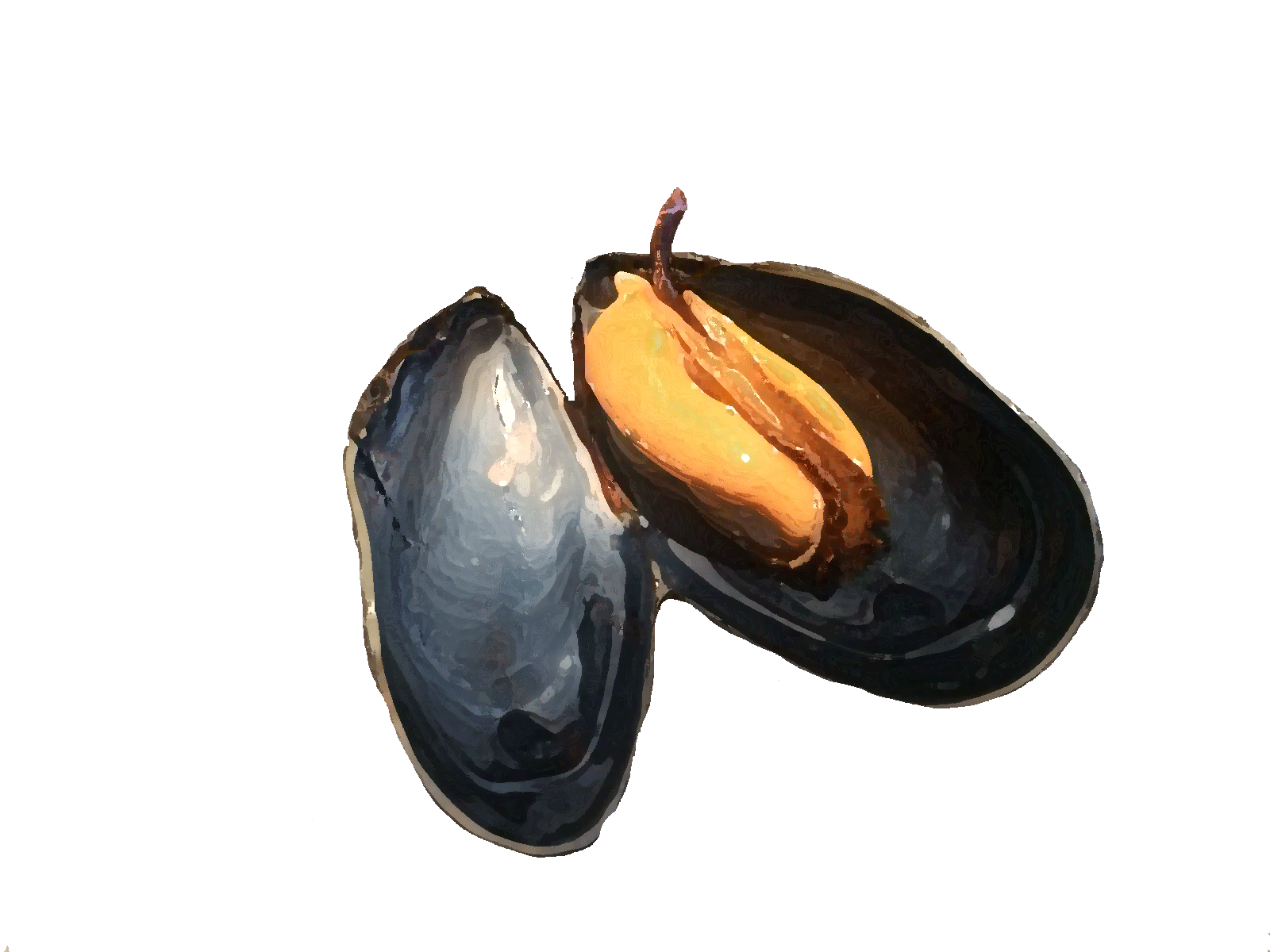There are several interactions between mussel beds and the nutrient homeostasis in their environment. By placing plastic tunnels over mussel beds, much knowledge has been gained in the past about food intake and nutrient production in a mussel bed in the Dutch and German Wadden Sea, Eastern Scheldt and Marennes-Oléron Bay. For this purpose, water samples were taken at the inflow and outflow sides of the tunnels. By examining the difference in composition, it was possible to determine what the mussels were ingesting and producing. These studies showed that algal concentrations decreased when passing over the mussel bed, while concentrations of inorganic nutrients such as ammonium increased (Dame & Dankers 1988, Prins & Smaal 1990, Dame et al. 1991, Asmus et al. 1992, Zurburg et al. 1994, Asmus et al. 1995, Prins et al. 1996). It has been shown that high filtration pressure by shellfish can increase the environmental quality of estuaries without reducing nutrients.

Mussel beds also have an effect on algae concentration and nutrient cycling of ecosystems on a much larger scale. In many ecosystems with large numbers of filtering shellfish, such as the Wadden Sea or the Eastern Scheldt, the “filtration time,” the time during which the shellfish can potentially filter the entire volume, is approximately equal to the turnover time (doubling time) of the phytoplankton. That means the grazing of algae by shellfish, such as mussels, can limit the amount of phytoplankton. As a result, ecosystems with a high density of shellfish are less susceptible to the effects of eutrophication, reducing the likelihood of explosive algal blooms that can cause fish kills. More or less nutrient input means more or less filtering organism, while phytoplankton levels in the water change much less.
Positive effect on algae growth
So the mussels remove nutrients from the water by eating the algae but shellfish, however, can also have a positive effect on algae growth (primary production) because the shellfish’s excretion of ammonia is a food source for algae. Thus, the interactions between shellfish and the food source (microalgae) have multiple feedback mechanisms. Mussels have a negative feedback on algae concentration by filtering algae out of the water, at the same time they have a positive effect on algae concentration by releasing nutrients that have a positive effect on algae growth The mussels, in other words, provide nutrient regeneration, the return of certain nutrients to the system. These types of interactions of filtration and nutrient delivery back provide a strong benthic-pelagic coupling and strong influence of benthic animals on the water column. In addition to filtration pressure by shellfish and nutrient regeneration, both grazing pressure and microalgae can be influenced by independent factors, e.g., predation on shellfish by birds or nutrient availability.
In addition to the direct release of nutrients (mainly ammonium) into the water, there is a second feedback pathway of nutrients. This is because mussels produce feces, this feces can then be converted into inorganic nutrients such as ammonium, phosphate and silicate through bacterial decomposition. These dissolved nutrients stimulate phytoplankton production, and through this feedback mechanism, the mussels can thus affect the rate of microalgae reproduction (primary production). However, it is suspected that nutrient conversion of individual nutrients (nitrogen, phosphate, silicate) does not occur at the same rate. As a result, the nutrient composition in the water column may change (e.g., more nitrogen than phosphate or vice-versa). In theory, this could then affect the composition of plankton populations because some species of algae require more or less of certain nutrients than others. In addition, the filtering itself can also lead to a change in the composition of algae species in the water. Fast-growing algae or algal species that are too small to be ingested may gain a relatively larger share of the algal community. There is even evidence that filtration may also have effects on zooplankton, and thus on the larvae of the shellfish themselves. Research has shown that the filtration pressure on shellfish larvae is quite high.


